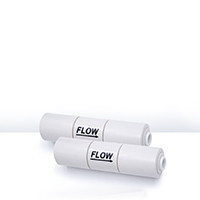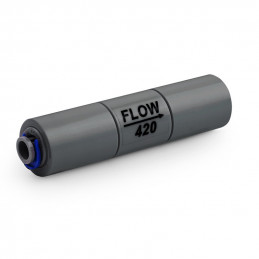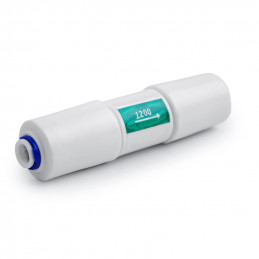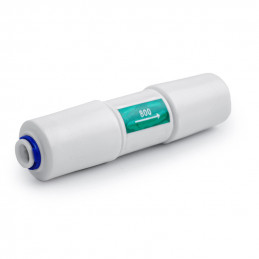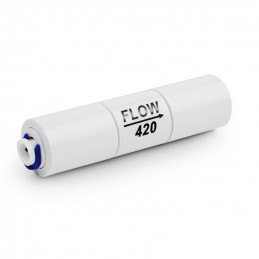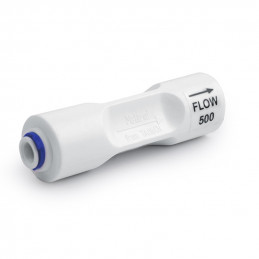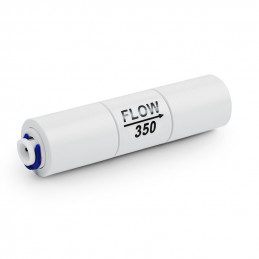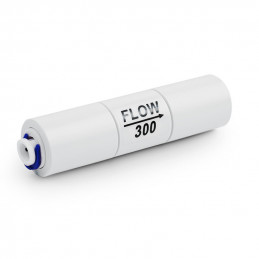- There are no more items in your cart
- Shipping
- Total zł0.00
- Bestsellers
- Hurt
- Water filters
- Whole house filters
- Kitchen filters
- Bathroom filters
- Aquarium filters
- Reverse osmosis
- Water demineralizers
- Filter cartridges
- UV bactericidal lamps
- Alkaline water ionizers
- Industrial water filters
- Accessories, parts, and others
- Descaling filters for the coffee machine
- Water softeners and iron removers
- Water saturators
- ACES
- AMBERLITE
- AQUA VITA
- AQUAFILTER
- AQUAPHOR
- AQUATOR
- BASSAU
- BERG
- BIOCERA
- BIONIQ
- BLUEFILTERS
- CHEMOFORM
- CINTROPUR
- DAFI
- DELONGHI
- DIAMOND
- DOM WODY
- ECOWATER
- FILMTEC
- FIT ALCO
- FITAQUA
- GREEN FILTER
- HANNA INSTRUMENTS
- HELIXPRO
- HELLO PURE
- HIDROTEK
- HM-DIGITAL
- HONEYWELL
- JAVEL
- KLARWOD
- KRUPS
- MIDEA
- OTOWODA
- OTTONE
- Palintest
- PENTAIR
- PHILIPS
- PLATINUM WASSER
- PUROLITE
- SIEMENS
- SUPREME
- TAB-SOL
- TOP FILTER
- UST-M
- USTM
- VONTRON
- WODARO
Porady
Water Flow Restrictors – Osmosis Restrictors
A flow restrictor, also known as a restryktor, is a small but crucial component of any reverse osmosis (RO) system. Its purpose is to maintain the appropriate pressure on the osmotic membrane. Thanks to it, the filtration process runs efficiently, and you enjoy crystal clear water. A properly functioning restryktor protects the membrane, extending its lifespan and ensuring the best filtration quality.
Filtruj
Price
What is a water flow restrictor?
Imagine that a flow restrictor is a precise "guard" in your water filter. It is a small nozzle (restrictor) installed at the outlet of dirty water (reject) from the osmotic membrane. It intentionally slows down the outflow of concentrate, which is water with filtered impurities. This simple water flow regulation creates back pressure, which is essential for pure water molecules to "squeeze through" the microscopic pores of the membrane. Without it, water would flow freely to the drain, and the reverse osmosis process would not occur at all.
Why does the water flow restrictor determine the effectiveness of reverse osmosis?
The effectiveness of the RO system depends on the ideal balance between pure water (permeate) and water rejected to the drain (concentrate). The flow restrictor directly manages this ratio. If it is incorrectly selected, the system will not operate optimally.
-
Too small restrictor: Excessively throttles the flow, causing an increase in pressure on the membrane. This leads to faster clogging of the membrane and shortens its lifespan.
-
Too large restrictor: Does not create sufficient pressure. As a result, most of the water goes to the drain, and the production of pure water is minimal. The quality of filtration also decreases.
It is worth knowing that all flow restrictors have a fixed, factory-calibrated flow rate value. This is what distinguishes them from needle valves, which allow for smooth regulation but are not used in home RO systems due to cost and complicated operation.
Flow restrictor vs. water pressure regulator – are they always the same?
Although both devices affect the operating parameters of the installation, they serve completely different functions and should not be confused.
-
Flow restrictor: Its task is to control the volume of water flowing at a given time (e.g., in milliliters per minute). It is a key element of reverse osmosis systems. Various applications of flow restrictors mainly include RO filtering systems.
-
Pressure reducer (regulator): It is installed on the main water supply in the building. Its purpose is to lower and stabilize the pressure throughout the water installation, protecting household appliances (washing machines, dishwashers) and the filter itself from damage caused by sudden pressure spikes in the network.
Simply put: the restrictor controls how much water flows, while the reducer controls with what force.
Flow restrictor for osmosis – selection for system performance
For your RO system to operate at maximum efficiency, the restrictor must be precisely matched to the performance of the osmotic membrane, expressed in gallons per day (GPD). A properly selected flow restrictor ensures that the operating pressure is maintained at an ideal level, which translates into effective filtration and membrane protection.
Below you will find a table to help you choose the right model:
|
Membrane performance (GPD) |
Recommended restrictor (ml/min) |
Product link |
|
50 GPD |
300 ml/min |
|
|
75 GPD |
420 ml/min |
|
|
100 GPD |
550 ml/min |
|
|
150 GPD |
800 ml/min |
It is worth knowing: Modern, high-performance RO systems may have integrated flow restrictors or advanced control systems that automatically regulate operating parameters.
Signs of wear – when to replace the water flow restrictor for osmosis?
The restrictor, like any consumable part, may wear out or clog over time. If you notice any of the following symptoms, it is likely time to replace it.
Diagnostic checklist:
-
Continuous operation of the filter: The system runs continuously, not shutting off after filling the tank. This most often indicates a clog in the restrictor and the inability to generate pressure to shut off the pump.
-
Decrease in performance: The tank for pure water fills much slower than it used to.
-
Louder operation of the pump: A clogged restrictor causes excessive load on the pressure-boosting pump.
-
High water rejection to the drain: You hear a continuous, intense sound of water flowing to the drain. This may indicate that the opening in the restrictor has enlarged due to erosion.
-
Deterioration of water quality: The TDS meter indicates an increased amount of dissolved solids in the purified water. Too low pressure on the membrane reduces filtration effectiveness.
Remember that all flow restrictors should be replaced prophylactically along with the osmotic membrane to ensure optimal working conditions for the new component.
DIY replacement of the restrictor step by step
Replacing the restrictor is simple and does not require specialized tools. It only takes a few minutes to restore the filter's full functionality.
-
Shut off the water supply to the filter and close the valve on the storage tank.
-
Open the faucet to release pressure from the system.
-
Locate the restrictor – it is a small, cylindrical element on the hose that drains water to the sewer (usually a black or red line).
-
Disconnect the hoses by pressing the safety ring of the quick connector and pulling out the hose. Pay attention to the arrow on the restrictor housing, which indicates the direction of flow.
-
Connect the new restrictor, ensuring that the arrow is pointing towards the drain. Firmly push the hoses into the quick connectors. It is crucial that the proper installation of the restrictor ensures tightness.
-
Open the water supply and check the tightness of the connections. Done!
Installation and service – common mistakes when installing a flow restrictor
Even with such a simple task, mistakes can be made that will affect the operation of the entire system. Avoid these common pitfalls:
-
Reverse installation direction: Installing the restrictor against the flow arrow will completely block the drain and prevent the filter from working.
-
Bent or pinched hoses: Ensure that the hoses are not bent at a sharp angle or pinched, as this restricts flow just like a clogged restrictor.
```html
-
No rinsing after replacement: After replacing the membrane and restrictor, the rinsing process of the new cartridge must always be carried out according to the manufacturer's instructions.
-
Mismatch with the membrane: Installing an incorrect restrictor is the most common cause of performance issues. Make sure you have a properly matched restrictor for your membrane.
Why should you buy a flow restrictor for your filter from our store?
By choosing products from our offer, you gain much more than just high-quality components. We provide you with:
-
✅ Professional technical support: Do you have doubts about which restrictor to choose? Our team of experts with many years of experience is happy to help you find the perfect solution.
-
✅ Fast and secure shipping: We know that time is important to you. We process orders quickly so you can enjoy an efficient filter as soon as possible.
-
✅ Quality guarantee: We offer only verified products from reputable manufacturers that we use and recommend ourselves.
-
✅ Wide selection: You will find restrictors for all popular types of membranes and other accessories necessary for servicing your RO system.
Water flow restrictors - frequently asked questions
What flow restrictor for 50 GPD, 75 GPD, 100 GPD membranes?
A restrictor of about 300 ml/min is used for a 50 GPD membrane, 420 ml/min for 75 GPD, and 550 ml/min for 100 GPD. Always check the manufacturer's recommendations for the membrane.
Can I increase performance by changing the restrictor to a smaller one?
No, that's a very bad idea. A smaller restrictor will raise the pressure and may temporarily increase the production of pure water, but it will also drastically accelerate the wear (clogging) of the osmotic membrane.
How can I check if my restrictor is working properly?
The simplest home test is to measure the amount of water going to the drain. Disconnect the hose from the drain and direct it into a measuring container. Measure the volume of water collected in one minute. The result should be close to the nominal value of your restrictor.
Is the flow restrictor universal?
There is no single universal flow restrictor for all systems. It must always be matched to the performance of the membrane. However, some models have some flexibility – for example, a 420 ml/min restrictor is often successfully used for both 75 GPD and 100 GPD membranes in systems with higher network pressure.
How often should the flow restrictor be replaced?
The best practice is to replace the restrictor every time you install a new osmotic membrane, which is every 2-4 years, depending on water quality and usage intensity.
Where in the system are other restrictors located?
In some advanced RO systems, additional types of water flow occur in the form of membrane flushing restrictors (so-called flush), which allow for periodic, intensive rinsing of its surface to remove accumulated deposits.
Check the full offer of flow restrictors and accessories for RO membranes
A properly functioning reverse osmosis system guarantees healthy and safe water for you and your family. The effectiveness of the water flow restrictor makes it one of the most important elements of this puzzle. Check out our offer and choose a restrictor perfectly matched to your needs. If you have questions, contact us – we are here to help you.
Text from 02.07.2025.
```



